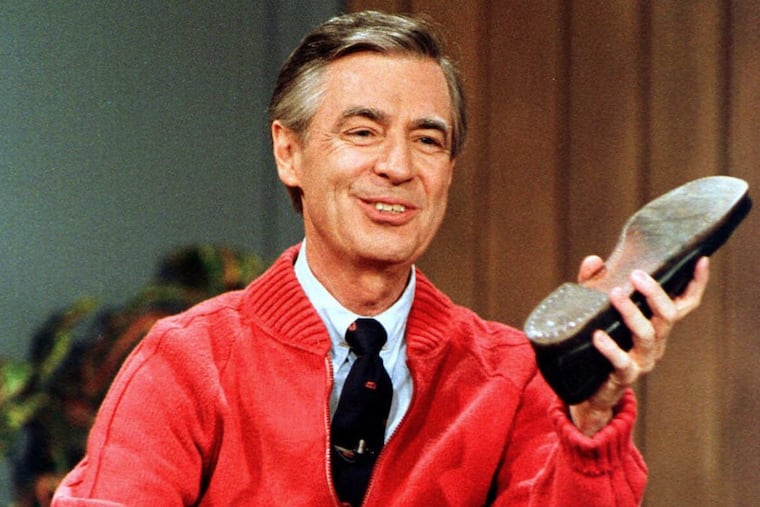‘Sexy Mr. Rogers’ costume reflects Halloween’s worst tendency: enforcing gender norms | Opinion
It’s a sad day in the neighborhood when even a costume meant to honor the children's TV icon hypersexualizes women.

Wear this costume and become “the friendliest next door neighbor in town.”
So says the ad hawking Yandy’s “Sexy Mr. Rogers” Halloween outfit, coming ahead of the Tom Hanks film about Fred Rogers set to release in November. Only this one swaps the famed children’s TV entertainer’s trademark red sweater and khakis for a plunging v-neckline, exposed midriff, and booty shorts.
It’s a sad day in the neighborhood.
It amazes me time and again that, despite this post-#MeToo moment, when gender equality is increasingly championed, Halloween remains a holiday when commercial costume makers emphasize traditional gender roles for children and the sexualization of women.
In my class at Rutgers University-Camden on gender, sexuality, and religion, we look at the impact of religious doctrines for establishing and maintaining specific gender roles, most of which aim to regulate women’s behavior, presentation, and sexuality. It strikes me that such issues are not only brought to the fore but celebrated every Halloween in the available costume options and choices made by trick-or-treaters of all ages.
Ideally, Halloween costumes present an opportunity to expand the possibilities of children’s identities — giving children a chance to experiment with clothing, which is one of the major ways gender is expressed in our culture. From the moment we dress an infant in a pink or blue onesie, clothing is very connected to this understanding of culturally enforced gender presentation.
Transgender activist Corey Rae recently wrote about how Halloween had always been her favorite holiday as a child, since it was the only time she could dress up like a princess without being judged — that is, until she got older and felt pressure to choose more “gender-appropriate” costumes.
For many children, costumes allow them to imagine a different version of themselves, often one that is more powerful, admired, and skilled. Too often, however, the freedom to use costumes to experiment with one’s identity has been replaced by the power of costumes to reinforce rigid gender roles. This makes Halloween a much different experience for girls than for boys.
Take a stroll through any Halloween store and you’ll notice these norms in plain view. Aisle after aisle, costumes are precoded to delineate those for boys and girls, and any uncertainties are quickly allayed by the models on the packages. If children don’t choose accordingly, they become aware at an early age that they are doing something considered inappropriate and different from their peers.
Worse yet, as children grow older, commercial costumes offer different models for adolescent boys and girls. “Sexy Mr. Rogers” sums this up perfectly. Boys’ costumes express power and agency, while girls’ versions emphasize beauty and sexual appeal. A large number of Halloween costumes are inspired by comic book/movie superheroes. Boys’ costumes offer extensive choices and possibilities for instant muscles and superhuman powers. Not so much for girls. Their limited options usually include extra ruffles and ribbons for younger children, and tighter-fitting, revealing, and sexualized costumes for older ones.
Similarly, if we look at occupational costumes, a male donning a hardhat, badge, or a stethoscope looks like he could head off to work. For young women, however, occupational costumes become sexualized as they get older — it’s easier for women to find a “sexy doctor” costume than just a doctor one.
Part of Halloween’s fun is a costume’s ability to be transgressive; the violations of our social norms go back to the origins of the holiday. Many opportunities still abound to masquerade outside normative behavior — as well there should be — but even so, boundaries continue to be drawn.
Parents should be mindful that the costume choices their children make may have less to do with spontaneity and more to do with them following prescribed gender roles. Let’s not assume that only 50% of the costume inventory is appropriate for each child.
If we want girls to grow up feeling empowered by a sense of their own independence and agency, rather than being channeled into preordained gender roles that accentuate the importance of female beauty and sexual appeal, we should pay attention to the messages these costumes express.
Stuart Charmé is a professor of religion and director of the graduate program in liberal studies at Rutgers University-Camden.